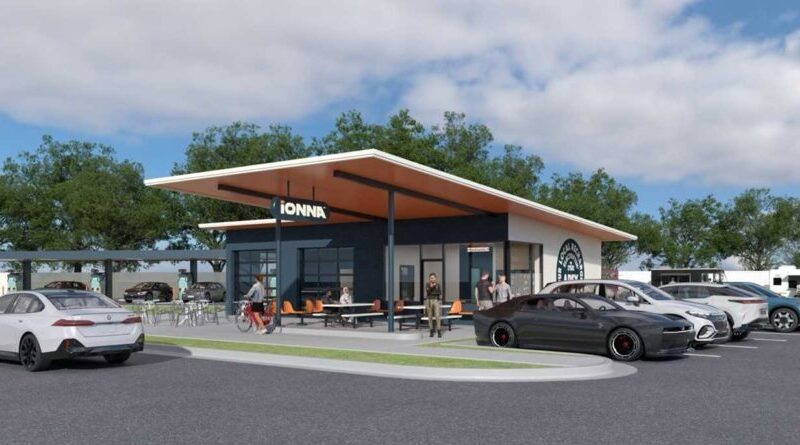Sign up for daily news updates from CleanTechnica on email. Or follow us on Google News!
When it comes to public EV charging in the United States, Tesla gets most of the attention. Honestly, the company has earned it. With more locations and more stalls than anybody in more places with better reliability, Tesla has long been the standard others are judged against.
This having been said, Tesla can’t do it alone. Even with all that the company has done with vehicle numbers and the number of charging stations, only about .86% of registered vehicles in the US are EVs, with most states under 1% and with fewer than 1 in 1000 in the two lowest states (ND and MS). Even with these low numbers, EV charging can still be a struggle, so this means that even multiplying the number of stations by 100 wouldn’t be enough to support an electric future!
To keep the EV transition moving, many many more charging stations will need to be built. Everyone who can build charging stations and operate them well needs to be doing that.
Government Funding Is In Peril
To stimulate the private investment in charging stations needed for future electric vehicles, the Biden Administration and Congress included funding for EV charging stations in the Bipartisan Infrastructure Law (even if it was only narrowly bipartisan). These provisions are known as the NEVI program. Like most federal transportation-related funding, NEVI was federal money that would be distributed to state departments of transportation, who would actually hire the contractors to do the physical work.
The overall plan was to seriously improve EV charging over 5 years. For the first year of funding, states would need to implement a plan to install at least four stalls every 50 miles (with limited exceptions) that can output 150 kW. For subsequent years, the plan is to next add more charging stations along other highways in the National Highway System (mostly US highways, but also key state and even local roads). So far, most states are working on securing funding for year two, while construction for the first year has already mostly had money handed to states and then handed to contractors.
In reality, though, this will not be a five-year program. The first “year” took several years to get through all of the federal and state bureaucracy, followed by the slow process of getting transformers at sites after they’re built. In the end, it could be more than 15 years before this five year program ends and all of the stations are up and running.
With the election of Donald Trump and a Republican Congress, it seems likely that the NEVI program will either be reduced or eliminated entirely. This would leave only private funding for EV charging stations for the next several years.
Private Efforts Can’t Be Stopped As Easily
Theoretically, Trumpists are for free markets and oppose most government spending because it would drive up taxes. The argument that the automotive industry shouldn’t be relying on public funding is an easy sell for the wider Republican Party, but to convince many conservatives that EVs need to be smashed by big government is a much harder sell outside of the most unprincipled and frankly idiotic portions of the base. Absent going full dictator and kicking off a righteous civil war against him, we are unlikely to see Trump go beyond cutting off incentives, tax credits, and subsidies.
With public funding in the most danger, private money is badly needed. The leadership at U.S. automotive manufacturers knows that EVs are the future in a global market. China has embraced them, full stop. European leaders are also quite serious about it, as are Canadian and to the extent possible, even Mexican leaders. Trumpists might be comfortable with isolationism, but automakers simply can’t afford to limit themselves to basketcase markets that will accept ICE long-term.
So, expect to see automakers work to pick up the slack while they also take advantage of the extra time to transition that Trump will likely afford them.
For this reason, I don’t expect EVs to go away as much as slow down a little in the next four years. The global market is going EV, automakers want to be part of that global market, Republicans can’t really smash EVs, and therefore automakers and savvy investors will do what it takes to earn that longer-term money.
iONNA Is More Important Than Ever Now
Last year, seven automakers announced that they’d be opening up their own charging network. Given the working title of “We Charge North America”, the plan was for BMW group, GM, Honda, Hyundia/Kia, Mercedes-Benz Group, and Stellantis to all pitch in the funds to build a high-quality charging network. Notably absent from this was Ford, VW (owners of Electrify America), Tesla (obvious why), and Nissan (not the big EV player it once was).
While these automakers have all at the time or since signed up to get access to Tesla’s Supercharger network, the need to not let Tesla become a charging monopoly was as obvious as the need for NACS. Private industry was faltering at making reliable charging outside of Tesla. Electrify America was having major reliability problems. Rolling their own was the only real choice.
Since then, we’ve started to see what that effort, now called iONNA, is going to look like:
Cue the makeover montage…phase 1 of the new https://t.co/yAvA8SWelr is now live and in living color! Take a minute to dive in, get to know us better, our Rechargeries, FAQs and more. Most importantly, drop us a line!
Now on to phase 2! pic.twitter.com/FvrVWq4HTK
— IONNA (@ionnaofficial) November 7, 2024
In short, iONNA is putting in reliable charging equipment from Alpitronic with a good assortment of amenities to make the company’s “rechargeries” a good choice for traveling EV drivers.

The first such station is under construction at an old gas station in Apex, North Carolina (not far from Raleigh and Durham). When completed, the site will have a driver’s lounge, bathrooms, coffee, food and drinks, and WiFi. It’s also going to have outdoor spaces to use when the weather is suitable, and some pet-friendly amenities (probably a dog park and pet watering station).
The company is also using a retro-inspired color scheme and 60s-70s styling to give a more retro-futuristic experience. This should help it be both cutting edge and also familiar for drivers who are new to EVs.
While it seems obvious that automakers are doing this for their own good in a global, it’s going to help save EVs in the United States. Private investment in charging stations needs to continue, regardless of what happens to tax credits and the NEVI infrastructure money. Efforts like iONNA will help that to keep happening.
Featured image by iONNA.

Chip in a few dollars a month to help support independent cleantech coverage that helps to accelerate the cleantech revolution!
Have a tip for CleanTechnica? Want to advertise? Want to suggest a guest for our CleanTech Talk podcast? Contact us here.
Sign up for our daily newsletter for 15 new cleantech stories a day. Or sign up for our weekly one if daily is too frequent.
CleanTechnica uses affiliate links. See our policy here.
CleanTechnica’s Comment Policy



